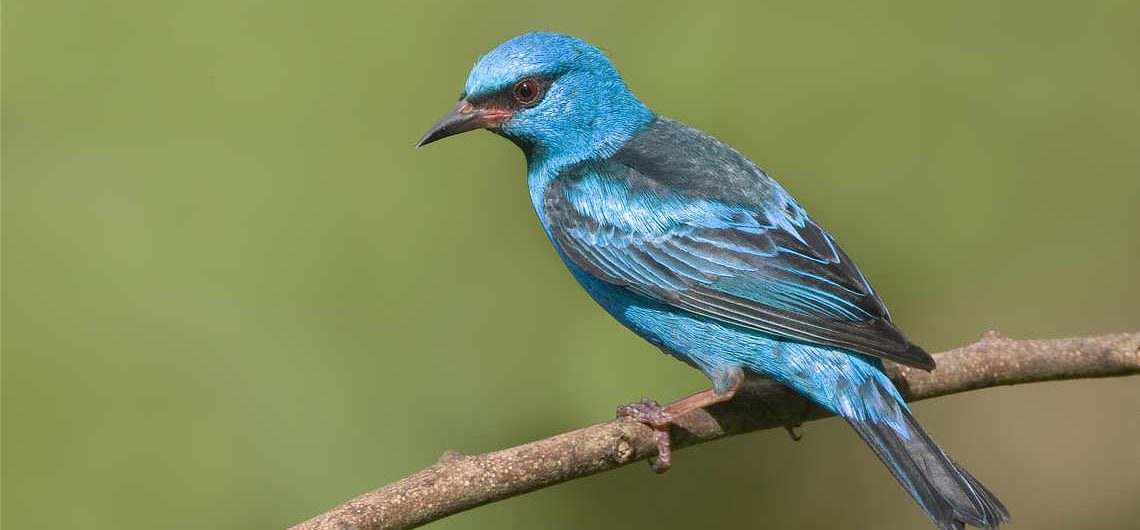Blue Dacnis
Dacnis cayana
The bright and cheery Blue Dacnis is a welcome sight to visitors at all the Canopy Family lodges. At only 11 cm in length, the Blue Dacnis is one of the smaller members of the colorful tanager family. The male is a brilliant blue overall, ranging from rich cobalt to bright turquoise, with a black back, mask and throat, and black edging on the wings. The female, unlike in most species, is equally as feching, with a bright green body and blue head. Juvenile birds are similar in appearance to females, but have more yellowish underparts and a darker mask. Both male and female sport pinkish legs. The Blue Dacnis has a straight pointed bill, unlike the similar honeycreepers which have decurved bills. There are eight recognized subspecies; they differ in the shade of blue in the males and the head color of the females. Two subspecies can be found in Panama; throughout most of the country, males are a bright ultramarine blue and females have a gray throat; in extreme western Panama, the females’ throat is tinged with blue, and males are a light turquoise color. Some refer to the Blue Dacnis as the “Turquoise Honeycreeper.”
The Blue Dacnis is an active little bird of the rainforest canopy, foraging for insects and fruits most often in the highest treetops. It can also be found along woodland edges and clearings with trees, and a variety of other habitats throughout its range. Blue Dacnis are social birds, and pairs tend to associate with mixed feeding flocks – up to 12 individuals may be present in a flock! Blue Dacnis are not overly vocal; their call is a high-pitched, thin “tsit” and their song isn’t much more than that. They feed primarily on insects and fruit, and occasionally feed on nectar. Insects are gleaned from foliage, and they are known to forage at specific leaves with damaged spots, where insects may be present. When it comes time to nest, they build a bulky nest with a deep cup or pouch made of fine fibers. The female incubates 2-3 whitish eggs with dark blotches, and the male brings her food. Eggs are incubated for a mere 13 days. Males are quite involved in parental care – the parents divide the nestlings between them, feeding the ones they are in charge of. Even unmated males are known to assist in caring for the nestlings. Blue Dacnis are known to host parasites such as lice and mites.
One of the most widespread birds of the Neotropics and the most common species of dacnis, the Blue Dacnis ranges from Honduras to eastern Bolivia, northeastern Argentina and southern Brazil, and can also be found on the island of Trinidad. They are found throughout Panama, in the lowlands and foothills to 1000 meters in elevation (they can be found up to 1650 meters in other parts of their range). They are regularly seen from the observation deck of the Canopy Tower and are common around all the Canopy Family lodges.
Odd name: “Dacnis” comes from the Greek word “daknis,” an unidentified bird from Egypt!

